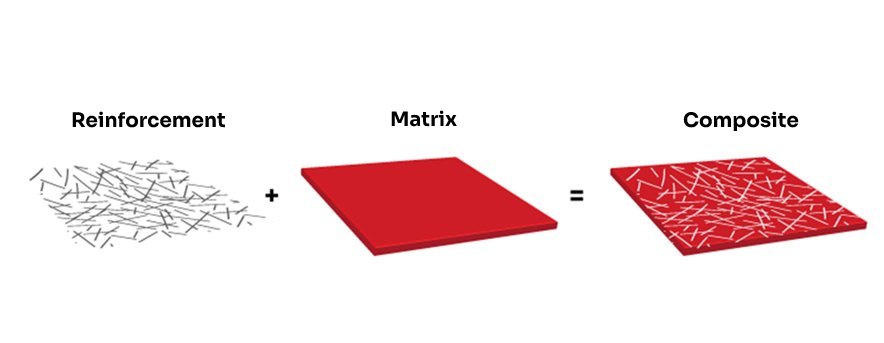
Intelligence
Composite Materials consist of two or more components with different chemical or physical properties. The combination of these materials results in superior properties compared to individual materials. Composites are known for improved strength, efficiency, and durability.
Composite materials have a rich history and significant development over the centuries. From use in ancient times to advances in the 20th century, these materials have played a crucial role in a variety of applications. Let's explore the history of composite materials and their development over time.
The use of Composite Materials dates back to the era before Christ, when ancient society created plywood structures by superimposing strips of wood at different angles. The Egyptians also used composites when making mortuary masks out of linen or papyrus soaked in plaster. Another emerging application at that time was to reinforce houses built of clay by adding straw as a structural element to increase the strength of the bricks.
 |
In the 20th century, after the industrial revolution, the first synthetic resins appeared. The advance of knowledge in chemicals boosted the development of plastic materials. Characteristics such as low electrical and thermal conductivity led to the wide use of these materials by several industries. Fiberglass was introduced in the 1930s, followed by the patent for the first carbon fiber in 1961. As of the 1990s, composite materials have gained preponderance due to technological evolution, which increased the demand for materials with better intrinsic properties and more competitive costs.
Most composites are composed of two materials: the matrix/binder and the reinforcement. A common example is fiber-reinforced polymers. These composites are developed with a polymer matrix and reinforced with fibers, either natural or man-made. The matrix is responsible for the efficient distribution of stresses to the reinforcing material, while the reinforcement increases the mechanical properties of the composite and absorbs the stresses from the matrix.
 |
Although polymeric matrices are the most common, there are also ceramic and metallic matrices, aimed at specific applications, such as high-temperature environments or intense wear. Polymeric matrices can be subdivided into two main groups: thermoplastic and thermosetting. Thermosetting polymers are widely used in composite materials. These consist of liquid resins that are solidified by heating or catalyst. Thermoplastic matrices, on the other hand, are solid at room temperature, but soften when heated. These matrices offer advantages such as higher fracture resistance, recyclability, and no release of hazardous solvents during hardening. The most common thermoset matrices are polyester, vinyl ester and epoxy, while the most common thermoplastic matrices are ABS, polyethylene, polystyrene and polycarbonate.
 |
Glass fibers are the most commonly used reinforcement materials due to their cost-effectiveness. However, there are several options available according to needs and specifications. These materials can be used in the form of short fibers, oriented or unoriented structures, or even rovings, depending on the case. In addition to synthetic fibers such as fiberglass and carbon fiber, natural fibers are increasingly gaining prominence due to their good properties and the sustainable factor.
 |
Composite materials stand out for their combination of strength, stiffness, and lightness. Being anisotropic materials, their properties vary according to the orientation and number of layers of reinforcement materials, that is, the fibers. By combining a matrix, a reinforcement material and its orientation, it is possible to customize the properties of the final product. In addition, composites have excellent strength-to-weight ratios, flexibility for molding complex parts, and durability due to resistance to fatigue and environmental factors such as UV rays, temperature fluctuations, humidity, and chemical exposure.
Did you like this article? Become part of the Fibrenamics community by registering for free here.